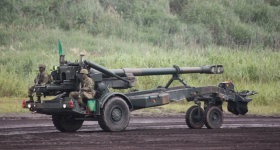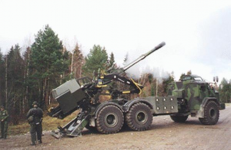OK
In Canadian service the Carl Gustav is an Anti-Tank weapon. In Swedish (and American) service it is an artillery piece. The difference is that it launches a lot more types of rounds than just HEAT. Smoke, Illumination, Anti Structure, Anti-Personnel, Flechettes, HE, Airburst are just some of those that come to mind.
The MGS was a vehicle on which the L7 105mm rifle was mounted. Or the M68 in US service. The M68 was selected not because it was an effective anti-tank weapon, it was, as some old Leopard C1 gunners can attest, but because it was available, it was cheap and it had a ready stock of various ammunitions which would be useful to the infantry in punching holes in things.
The weapon could also be used to kill tanks, if the situation were favourable, but if you wanted to punch a hole in a brick wall it was nice to have on hand.
And, in my opinion, it would have been nicer still if the vehicle could have been manoeuvred remotely into firing position by a dismounted crew under cover.
And if that were possible then it seems to me it would have been possible to effectively group those guns in an unmanned firing line to spring on the flanks of an advancing enemy.
Rommel did it with his dual purpose 88s.
As Colin points out today the Russians and Ukrainians are still doing it.
And WRT loitering munitions et al - I think the watch word has to be "attritable". We need to get used to weapons being tools, consummables that are going to be destroyed - and have to be cheaply and quickly replaced. Without having to replace crews. Better they were someplace the weapon isn't.







